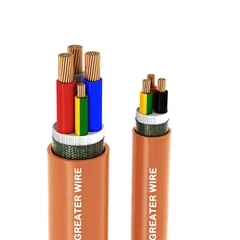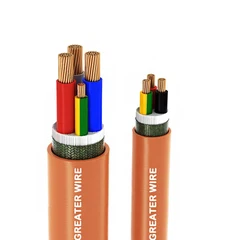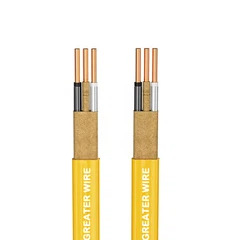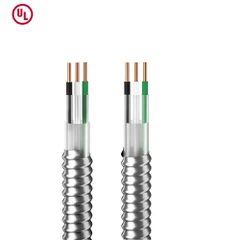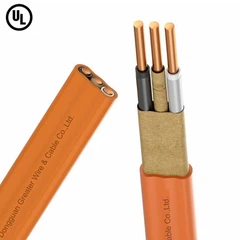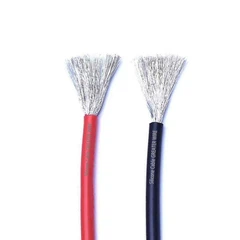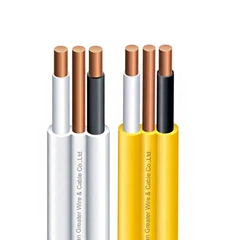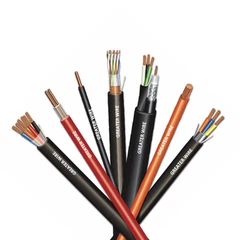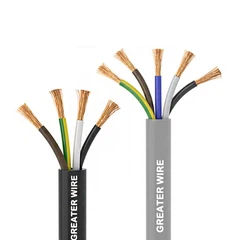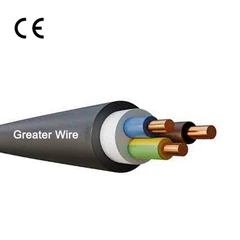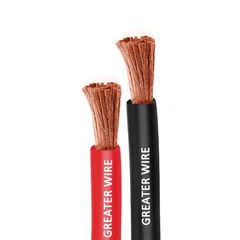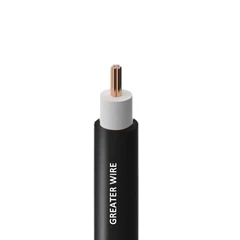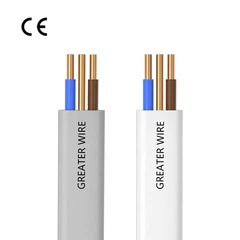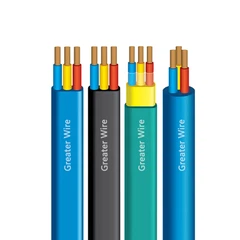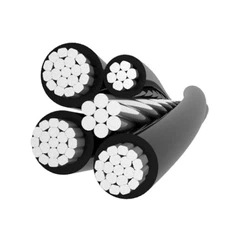Silicone wires have become indispensable in industries ranging from electronics and automotive to medical and photovoltaics, thanks to their exceptional heat resistance, flexibility, and durability. However, their unique material properties also present distinct challenges when it comes to processing-especially in the critical step of stripping the insulation. Unlike common PVC wires, where stripping is often a straightforward task, silicone wire demands precision, care, and an understanding of its inherent characteristics.
Why is stripping silicone wire such a critical process? At first glance, it may seem like a simple mechanical task: removing the outer insulation to expose the conductor for electrical connections. But in reality, stripping is far more than just a manufacturing step-it is a cornerstone of electrical safety. A poorly stripped silicone wire can lead to exposed conductors, inconsistent connections, or even damage to the wire itself, all of which pose risks of short circuits, electrical fires, or equipment failure. In high-stakes environments like medical devices or aerospace systems, a single mistake in stripping can compromise entire operations. Thus, mastering the art of stripping silicone wire is not just about efficiency; it is about upholding the highest standards of safety and reliability.
This guide will walk you through everything you need to know about stripping silicone wire, from understanding its material challenges to step-by-step procedures, comparisons of manual vs. automated methods, and insights into how proper stripping impacts performance and longevity. Whether you are a technician, manufacturer, or end-user, this knowledge will help you ensure secure, efficient, and long-lasting electrical connections.
Why Stripping Matters: Beyond Mechanics, a Safety Imperative
Stripping silicone wire is often underestimated, but its role in electrical systems is foundational. Here's why it matters:
Electrical Safety: Exposed conductors due to uneven stripping can cause arcing, short circuits, or electric shocks. Conversely, leaving excess insulation on the conductor can lead to poor contact, overheating, and fire hazards. In industries like healthcare, where medical devices rely on silicone wires, a single faulty strip could endanger patient lives.
Connection Reliability: A clean, precise strip ensures maximum contact between the conductor and terminals, minimizing resistance. High resistance leads to energy loss, overheating, and premature failure of components-critical issues in automotive or aerospace applications where reliability is non-negotiable.
Compliance with Standards: Industries such as automotive (ISO) and aerospace (SAE) mandate strict stripping tolerances. Non-compliant stripping can result in product recalls, failed inspections, or legal liabilities.
Material Characteristics of Silicone Wire and Stripping Challenges
To master stripping, you must first understand the unique properties of silicone wire that make it different from PVC or rubber-insulated wires:
Key Material Properties of Silicone Wire
Silicone Insulation: Silicone rubber is inherently soft, flexible, and elastic. Unlike rigid PVC, it stretches rather than breaking under pressure, making it resistant to sharp, clean cuts. It also retains its flexibility across extreme temperatures (-60°C to 200°C or higher), which means it doesn't harden or become brittle-traits that complicate stripping.
Conductor Construction: Most silicone wires use multi-stranded tinned copper conductors. These strands are thin and delicate; excessive force during stripping can twist, break, or fray them, reducing conductivity and creating weak points in the wire.
Adhesion: Silicone insulation often has low adhesion to the conductor, but its elasticity can cause it to "cling" to the copper strands. This makes it harder to remove the stripped insulation cleanly without pulling on the conductor.
Stripping Challenges
Elasticity: When cut, silicone insulation tends to stretch rather than separate, leading to uneven edges or "stringing" (thin strands of silicone remaining attached to the conductor).
Delicate Conductors: Multi-stranded tinned copper is prone to damage. Using tools with too much pressure can crush or sever strands, weakening the wire's current-carrying capacity.
Insulation Thickness Variability: Silicone wires often have varying insulation thicknesses (e.g., 0.5mm to 3mm) depending on voltage rating. Thicker insulation requires more precise tool adjustment to avoid conductor damage, while thinner layers are easier to over-cut.
Temperature Sensitivity: While silicone itself is heat-resistant, excessive friction from stripping tools can generate localized heat, causing the insulation to melt or stick to the conductor-especially in high-speed automated processes.
Step-by-Step Guide to Stripping Silicone Wire
Proper stripping requires the right tools, technique, and attention to detail. Follow these steps for consistent, safe results:
Tools Needed
Adjustable Wire Strippers: Choose strippers with precision settings for small gauge wires (e.g., 22AWG to 10AWG) and rounded jaws to avoid pinching.
Sharp Blade or Knife: A utility knife with a fresh blade (for manual stripping of thicker wires), but use with caution to prevent cuts.
Heat Gun (Optional): For very thick or stubborn silicone insulation, gentle heating (50–80°C) can soften the material without damaging it.
Magnifying Glass or Microscope: For inspecting small-gauge wires to ensure no conductor damage or remaining insulation.
Wire Brushes or Alcohol Wipes: To clean the exposed conductor of any silicone residue.
Step 1: Select the Right Tool and Adjust Settings
For wires 16AWG or smaller: Use adjustable wire strippers. Set the stripping die to match the wire's insulation diameter (not the conductor). Test on a scrap piece first-if the insulation stretches without cutting, tighten the setting slightly; if the conductor is nicked, loosen it.
For thicker wires (14AWG and above): A sharp knife may be more effective. Hold the wire firmly and rotate the knife around the insulation to create a circumferential cut, applying minimal pressure to avoid piercing the conductor.
Step 2: Position the Tool Correctly
Place the wire in the stripper jaws or against the knife at the desired stripping length (typically 3–10mm, depending on the application). Ensure the tool is perpendicular to the wire to avoid angled cuts, which can leave uneven edges.
Step 3: Make the Cut
For strippers: Squeeze the handles gently but firmly to cut through the insulation. Avoid excessive force-let the tool do the work.
For knives: Rotate the blade around the insulation in one smooth motion. The goal is to cut through the insulation without touching the conductor. If the silicone stretches, pause and reposition the blade to deepen the cut slightly.
Step 4: Remove the Insulation
Grasp the stripped end of the insulation with your fingers or pliers and pull it away from the conductor in a straight, steady motion. If the insulation resists, wiggle it gently while pulling to break any remaining adhesion.
For stubborn insulation: Use a heat gun on low setting to warm the insulation for 2–3 seconds, then pull again. Do not overheat, as this can degrade the silicone.
Step 5: Inspect the Result
Check the exposed conductor for nicks, fraying, or strands that are cut or bent. Even minor damage can reduce conductivity.
Ensure no silicone residue remains on the conductor-wipe with an alcohol wipe if needed.
Verify the insulation edge is clean and even, with no "hairs" or strands of silicone extending beyond the cut.

Manual vs. Automated Stripping: Choosing the Right Method
The choice between manual and automated stripping depends on volume, precision requirements, and application context. Here's how they compare:
Manual Stripping
Best For: Small batches, repairs, or custom installations where flexibility is key. Examples include field service for medical equipment, prototype assembly, or low-volume electronics manufacturing.
Advantages:
No need for expensive machinery; tools are portable and affordable.
Adaptable to irregular wire lengths or unique stripping requirements (e.g., stripping in tight spaces).
Ideal for learning the basics of silicone wire behavior.
Disadvantages:
Inconsistent results: Human error leads to varying strip lengths, uneven edges, or occasional conductor damage.
Time-consuming for large volumes, increasing labor costs.
Higher risk of safety hazards (e.g., cuts from knives) with untrained operators.
Automated Stripping
Best For: High-volume production (e.g., automotive wiring harnesses, solar panel assemblies) or applications requiring strict compliance with standards (e.g., UL, TUV).
Advantages:
Precision: Machines use computerized settings to ensure consistent strip lengths (±0.1mm) and clean cuts, reducing waste.
Speed: Can process hundreds of wires per minute, lowering per-unit costs.
Safety: Reduces operator contact with sharp tools, minimizing accidents.
Compliance: Automated systems log data (e.g., strip length, pressure) for audit trails, essential for industries with strict documentation requirements.
Disadvantages:
High upfront cost for machinery (ranging from $5,000 to $50,000+).
Less flexible for small batches or custom jobs; retooling takes time.
Requires trained operators to adjust settings for different wire gauges or insulation thicknesses.
Stripping Requirements Across Applications
Different industries demand unique stripping standards to meet their operational needs:
Automotive: Under-the-hood wires face vibrations, oil, and temperatures up to 150°C. Stripping must be precise (±0.5mm) to ensure crimped terminals don't loosen. Exposed conductors must be tinned or sealed to resist corrosion from road salts.
Medical Devices: Wires in MRI machines or surgical tools require ultra-clean stripping-no silicone residue allowed, as it could contaminate sterile environments. Stripped lengths are often very short (2–3mm) to fit compact connectors.
Aerospace: High-altitude and extreme temperature fluctuations demand stripping with zero conductor damage. Even a single broken strand in avionics wiring can compromise signal integrity. Automated stripping with laser precision is standard here.
Photovoltaics (Solar Panels): Outdoor exposure to UV radiation and moisture means stripped ends must be sealed immediately after stripping. Insulation edges must be smooth to prevent UV-induced cracking, which could lead to water ingress.
Electronics: Small-gauge silicone wires (e.g., 28AWG) in circuit boards require delicate stripping to avoid damaging both the conductor and nearby components. Stripped lengths are often as short as 1mm to fit tight spaces.
Stripping and Long-Term Reliability
The longevity of an electrical connection hinges on proper stripping, especially in harsh environments:
High Humidity (e.g., Marine, Food Processing): Inadequate stripping leaves gaps between the insulation and conductor, where moisture accumulates. This causes the tinned copper to oxidize, forming a layer of corrosion that degrades conductivity over time. A clean, tight strip creates a barrier against moisture, extending the wire's life by 5–10 years in such environments.
High Temperature/UV Exposure (e.g., Engine Bays, Outdoor Solar Arrays): Silicone insulation expands and contracts with temperature changes. Irregular stripping creates uneven stress on the insulation, leading to cracks that grow over time. UV radiation accelerates this process, making the insulation brittle. A smooth, even strip ensures uniform stress distribution, preventing cracks and preserving insulation integrity for decades.
Vibration (e.g., Industrial Machinery, Automotive): Poorly stripped wires with frayed strands are prone to fatigue failure under constant vibration. The strands rub against each other, weakening over time until the wire breaks. A precise strip with intact strands resists this fatigue, maintaining connectivity even in high-vibration settings.
Choosing the Right Silicone Wire for Your Stripping Needs
Selecting the right silicone wire model is as important as mastering the stripping process. Here's how to match wire characteristics to your stripping method:
For Frequent Manual Stripping: Opt for silicone wires with a slightly firmer insulation (Shore A hardness of 60–70). This reduces stretching during cutting, making it easier to achieve clean strips. Dongguan Greater Wire & Cable Co., Ltd. offers a "Hand-Strip Friendly" line (e.g., GWS-60 series) designed for this purpose, with insulation that cuts cleanly without excessive elasticity.
For Automated Stripping: Choose wires with consistent insulation thickness and concentricity (uniformity around the conductor). This ensures machines can set precise cutting parameters. Our GWA-50 series is engineered for automation, with tight tolerances (±0.05mm) in insulation thickness, minimizing retooling time.
For High-Temperature Applications: Select wires with heat-stabilized silicone insulation (e.g., GWH-200 series), which retains its structure during stripping even at elevated temperatures, reducing the risk of melting or sticking to the conductor.
About Dongguan Greater Wire & Cable Co., Ltd.
When it comes to silicone wires, quality and expertise matter. Dongguan Greater Wire & Cable Co., Ltd. brings over 30 years of manufacturing experience and 10+ years of export expertise to deliver wires that meet the most demanding global standards. Our products are sold in 80+ countries and carry certifications including UL, TUV, and CE, ensuring compliance with international safety and performance regulations.
We don't just sell wires-we provide end-to-end support:
Custom Solutions: Tailor insulation thickness, conductor count, and tinned copper quality to your specific stripping and application needs.
Technical Guidance: Our engineers offer detailed stripping protocols, tool recommendations, and troubleshooting advice to optimize your process.
Free Samples: Test our wires with your stripping methods before committing to large orders.
To learn more or request a sample, contact us today:
📞 Contact Us Today:
Dongguan Greater Wire & Cable Co., Ltd.
Tel/WhatsApp/Wechat: +86 135 1078 4550 / +86 136 6257 9592
Email: manager01@greaterwire.com

